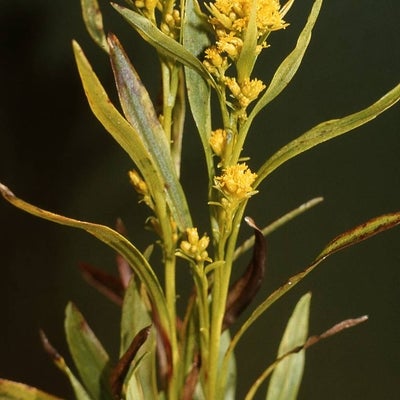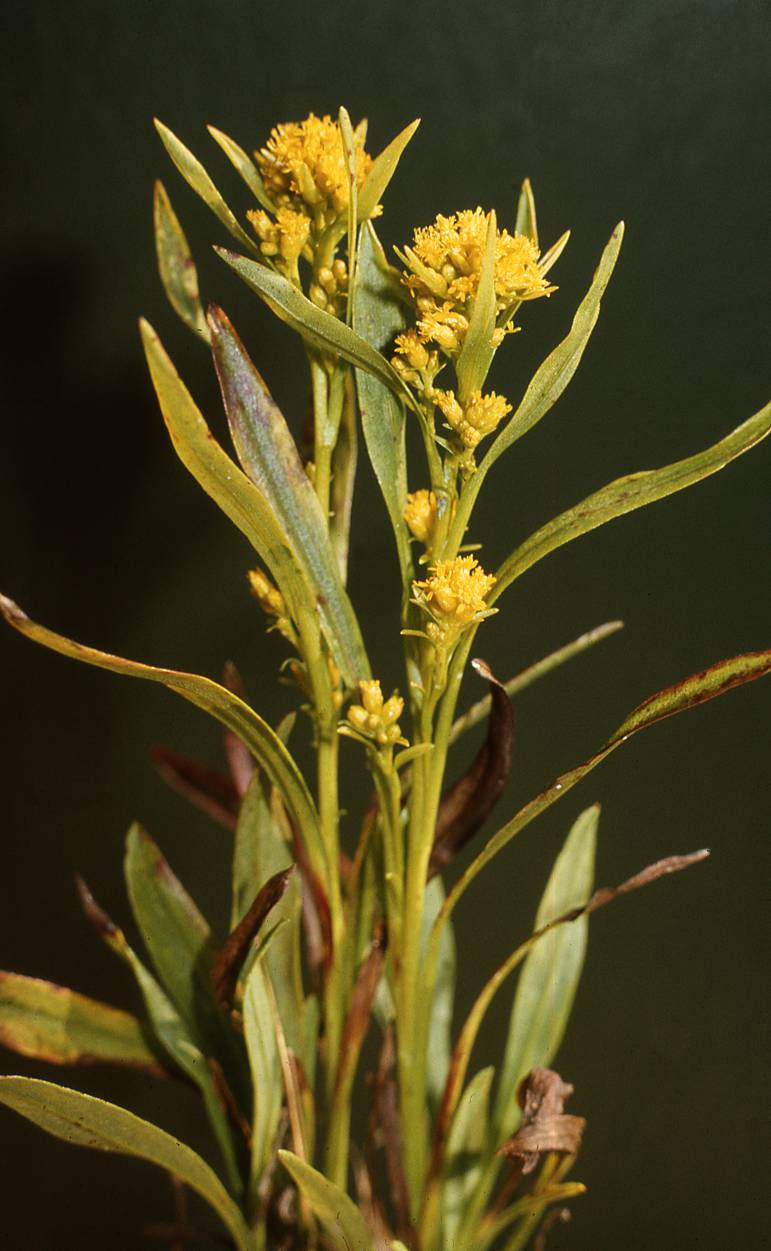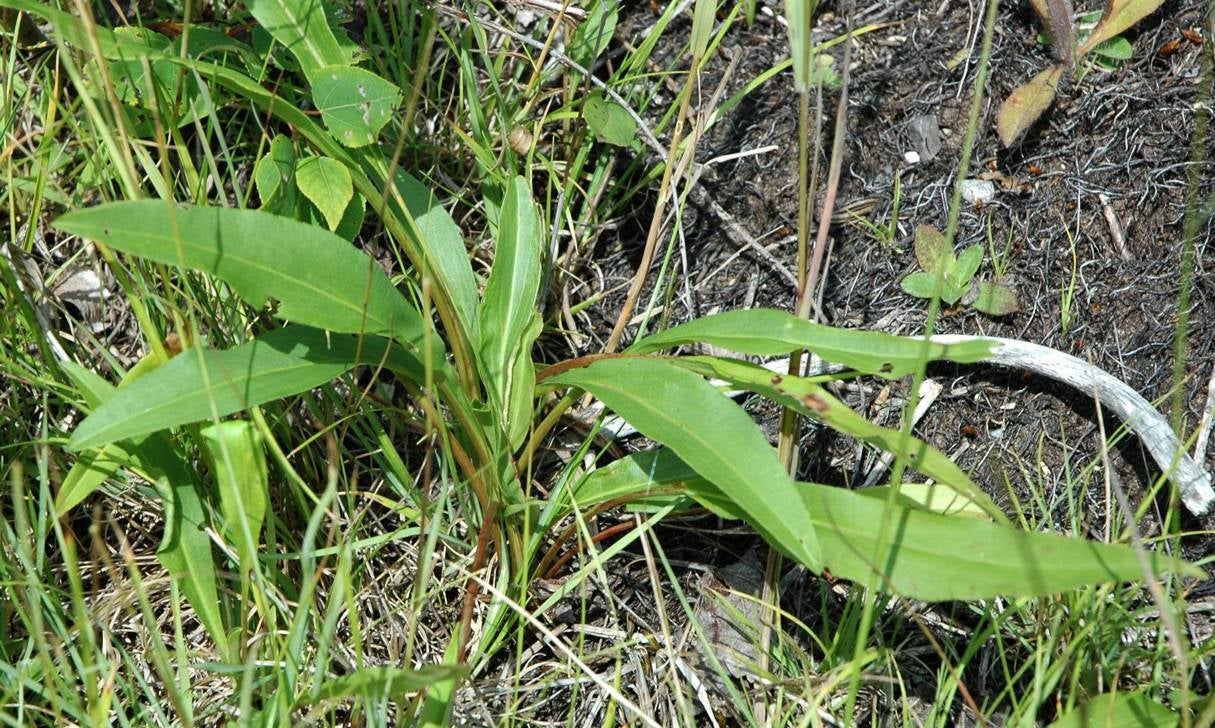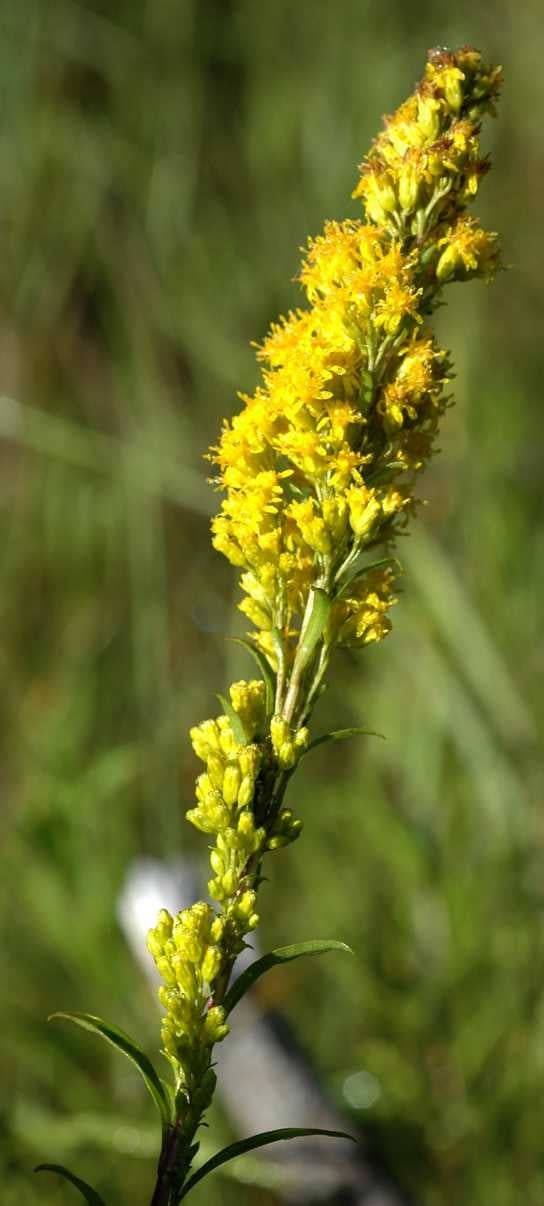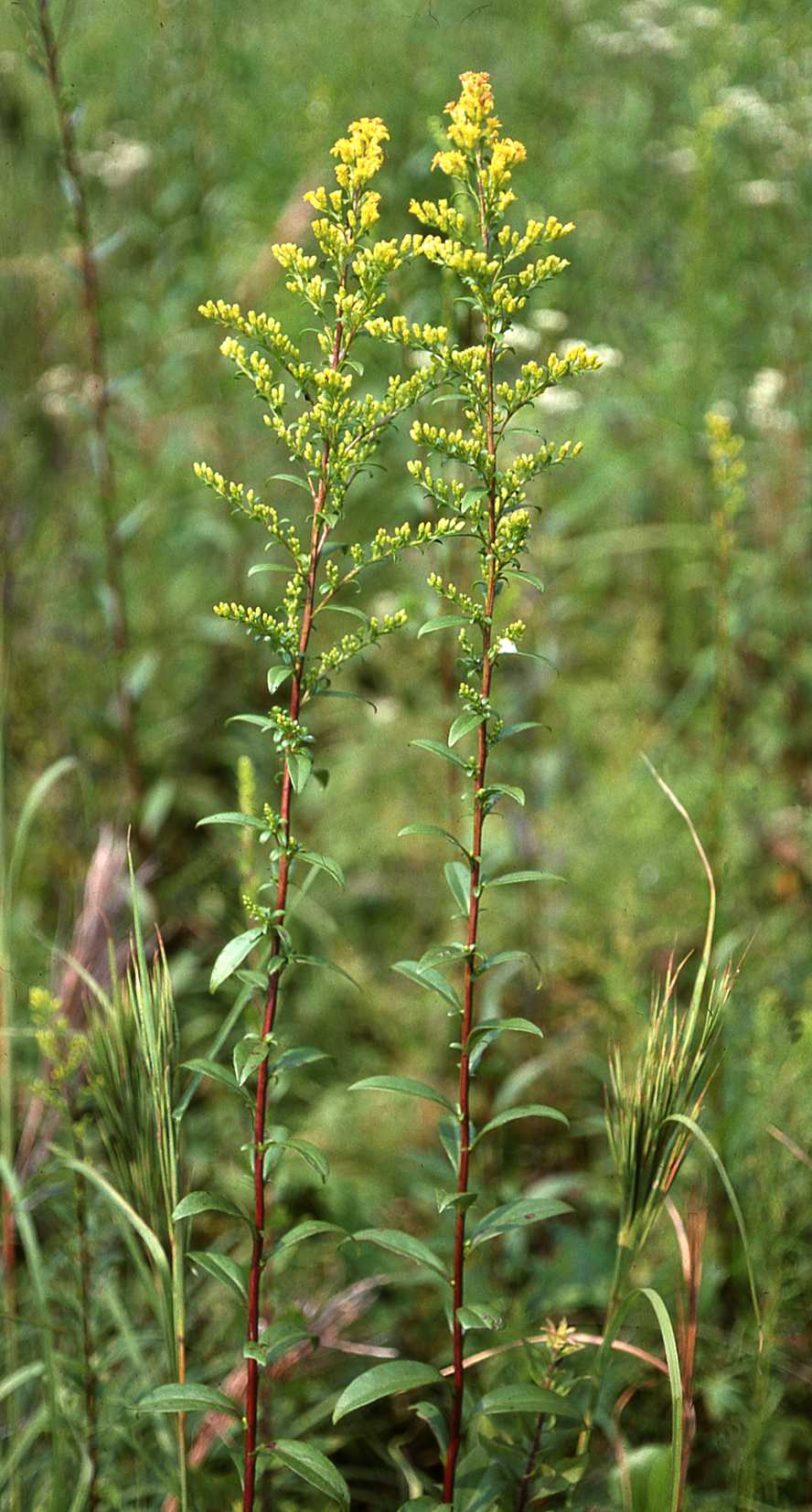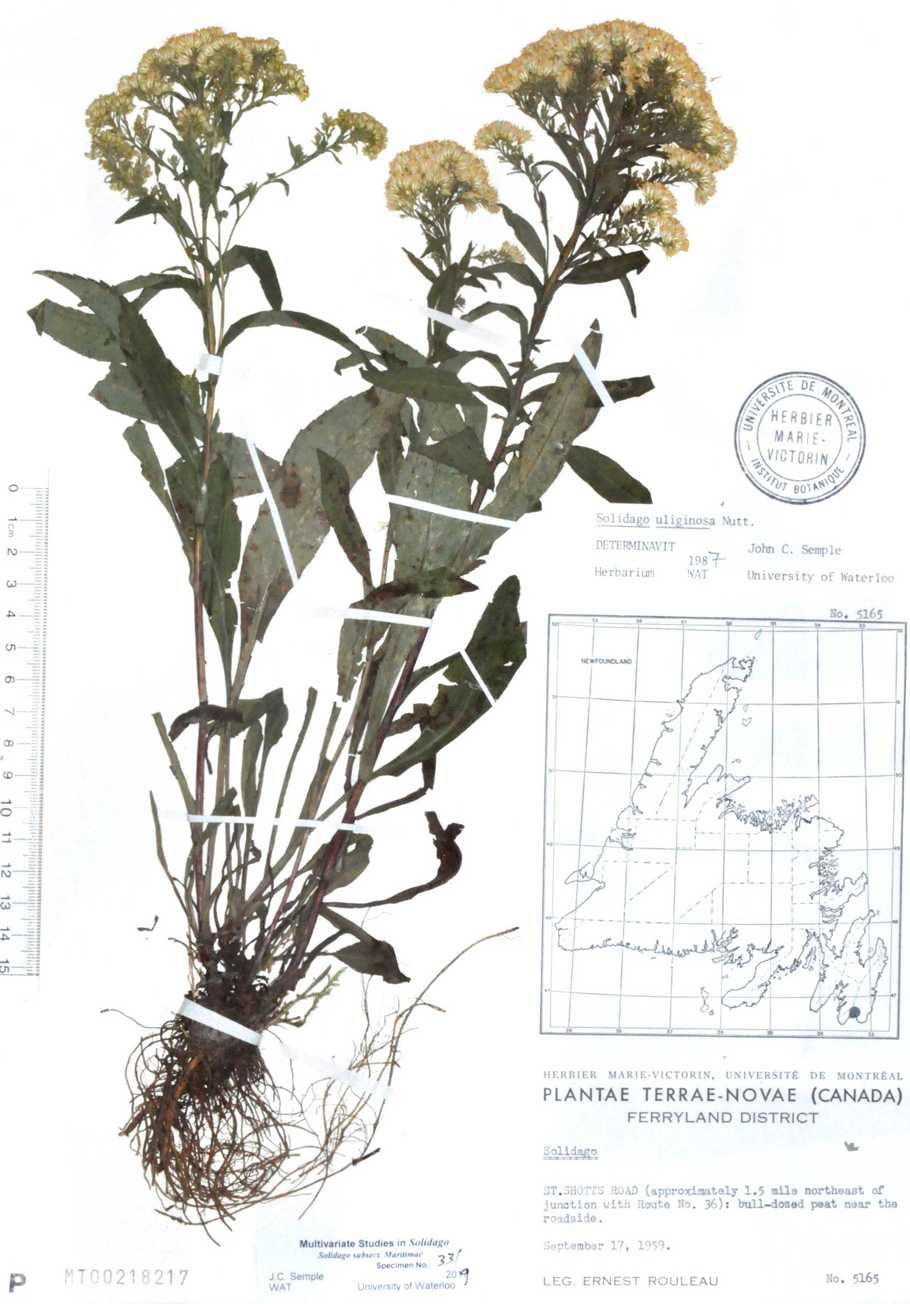Northern Bog Goldenrod, verge d’or des marais
Solidago uliginosa Nutt. is highly variable in stem height, basal leaf width, the size of the inflorescence and the branching pattern. These are in part greatly influenced by growing conditions. The list of synonyms is long (Semple & Cook 2006 FNA). Basal and lower stem leaves are obviously serrate and stem leaves are reduced upward and relatively few in number compared to S. austrina, S. mexicana, S. sempervirens, S. stricta, and S. virgata. Inflorescences are usually club shaped with short ascending branches (var. peracuta), but along the east coast from Maine to New Jersey and in southwestern part of the range the inflorescence can be more secund apically and have longer more spreading branches (var. uliginosa). The results of a multivariate morphometric study of the S. uliginosa complex (Semple et al. 2019) indicated that S. uliginosa was distinct from S. simulans, which is closely related and native to mostly higher elevations in scattered locations in North Carolina, northeastern most Georgia, eastern Tennessee and southwestern Virginia south of the range of S. uliginosa.
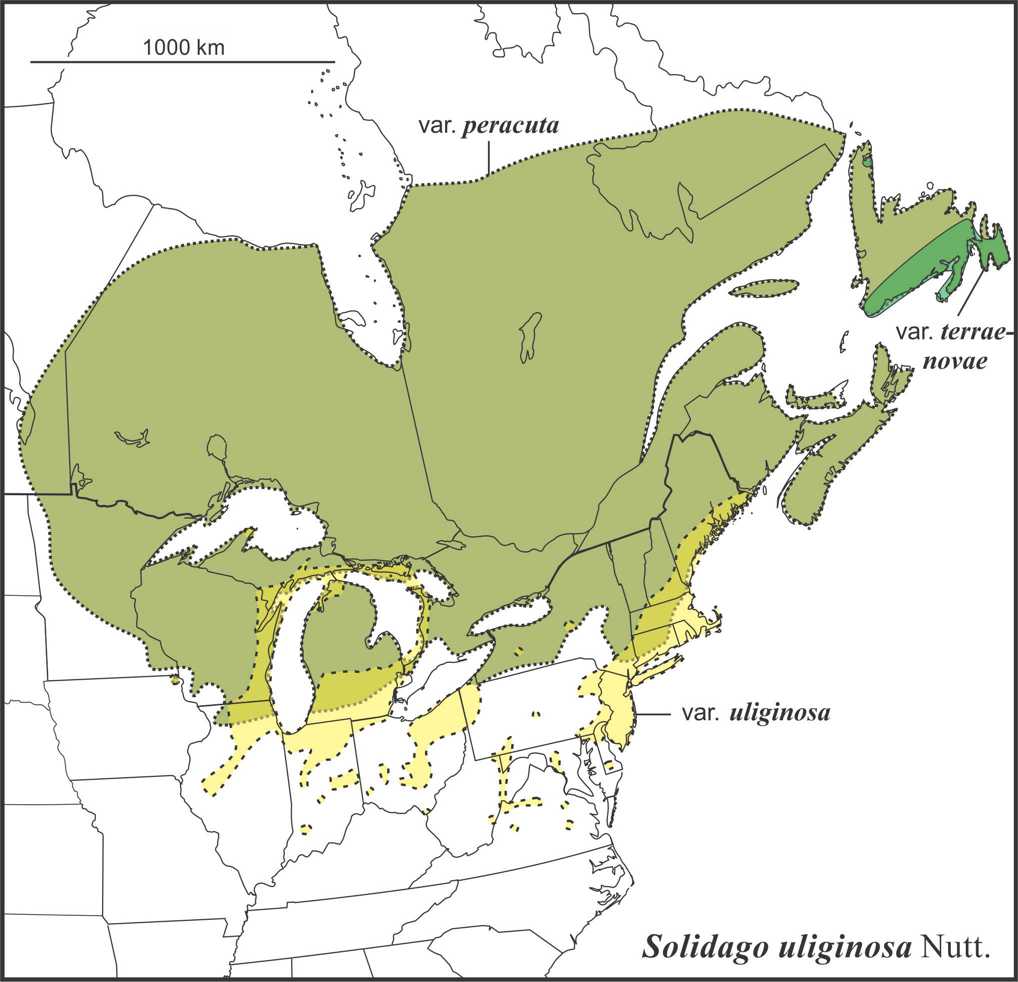
Solidago uliginosa is native to bogs, marshes and wet depressions in the northeastern United and eastern Canada. The range extends south to West Virginia and northern Virginia in the Appalachian Mts. and in scattered locations south of the Great Lakes in Ohio, Indiana and Illinois.
The species is mostly diploid (2n=18) in the northern two thirds of the range and tetraploid in the southern third of the range. Tetraploids (2n=36) occur in the southern third of the range and in a few scattered locations further north (Chmielewski et al 1987; additional published an unpublished counts). Semple & Cook (2022) included S. uliginosa in their review of the cytogeography of sect. Maritimae.
Solidago uliginosa has been divided historically into several varieties. Semple et al. (2019) found support for recognizing three varieties:
- var. uliginosa is tetraploid (2n=36) and occurs in the southern portion of the range of the species where it is allopatric, but also further north along the Maine coast and along the coasts of Lakes Michigan and Lake Huron in the west. It is distinguished by have longer inflorescence branches that are broadly spreading; branches may be shorter in small or immmature inflorescences. Solidago linoides Torr & A. Gray, S. neglectaTorr. & A. Gray, and S. uniligulata (D.C.) Porter are synonyms.
- var. peracuta (Fern.) Freisner is mostly diploid (2n=18) and occurs in the northern two thirds of the range of the species from Newfoundland and Labrador to southeastern Manitoba south to New York, Michigan and northern Illinois. It is distinguished by have short inflorescence branches that are ascending; branches may be longer in robust inflorescences but these are ascending and not broadly spreading. Stems range from 0.1-1.2 m in height. Solidago humiles Banks ex Pursh (not Mill. nor Desf.) and Solidago purshii Porter are synonyms.
- var. terrae-novae (Torr. & A. Gray) Fern. occurs in Newfoundland, mostly in the southern portions of the island, and St. Pierre et Miguelon. It is distinguished by having inflorescences that are rather corymbiform in general shape or at least very compressed panicules with long ascending lower branches.
Last revised 12 April 2025 by J.C. Semple
© 2025 J.C. Semple, including all photographs unless otherwise indicated.
1-8. Solidago uliginosa. 1-3. var. peracuta. 1. Tall plant, Semple 11837, Michigan. 2. Dwarf shoot, Semple & Brammall 2284, Bruce Co., Ontario. 3. Basal rosette, S 11846. 4. Inflorescence, S 11846. 5-6. var. uliginosa. 5. Shoots, Semple & Suripto 9524, Ocean Co., New Jersey. 6. Inflorescence, Sauble Beach, Ontario. 7-8. Habit and inflorescence, var. terra-novae, Rouleau 5165 MT, Newfoundland.
Chmielewski, J.G., G. S. Ringius, and J.C. Semple. 1987. The cytogeography of Solidago uliginosa Nutt. (Compositae: Astereae) in the Great Lakes region. Can. J. Bot. 65: 1045-1046.
Semple, J.C., T. Shea, H. Rahman, Y. Ma, and L. Tong. 2019. A multivariate morphometric analysis of the Solidago uliginosa
complex (Asteraceae: Astereae; S. subsect. Maritimae) in eastern North America. Phytoneuron 2019-48: 1–44.
Semple, J.C. and R.E. Cook. 2022. Cytogeography of Solidago sect. Maritimae (Asteraceae: Astereae). Ann. Mo. Bot. Garden 107: 21-31.

